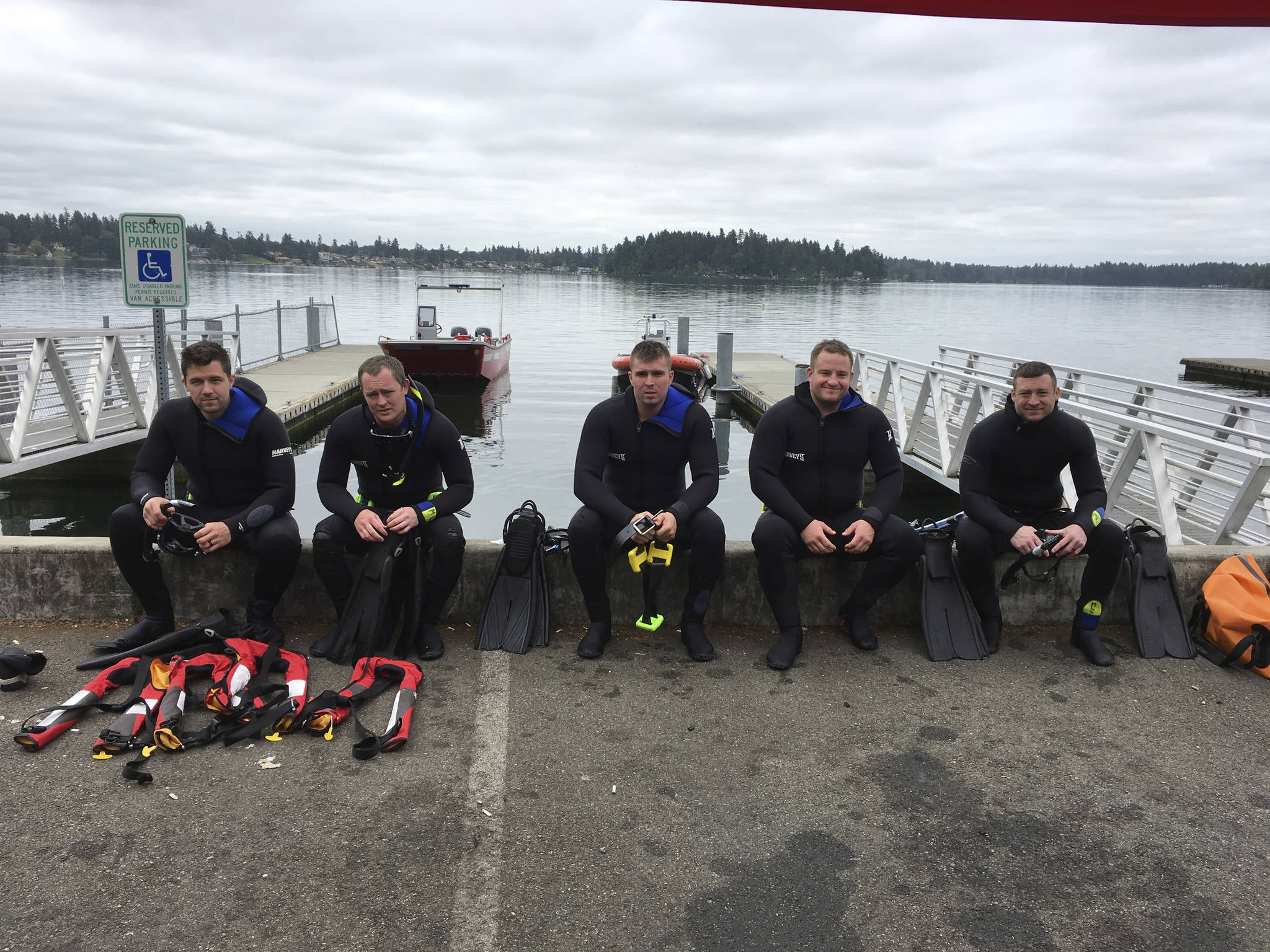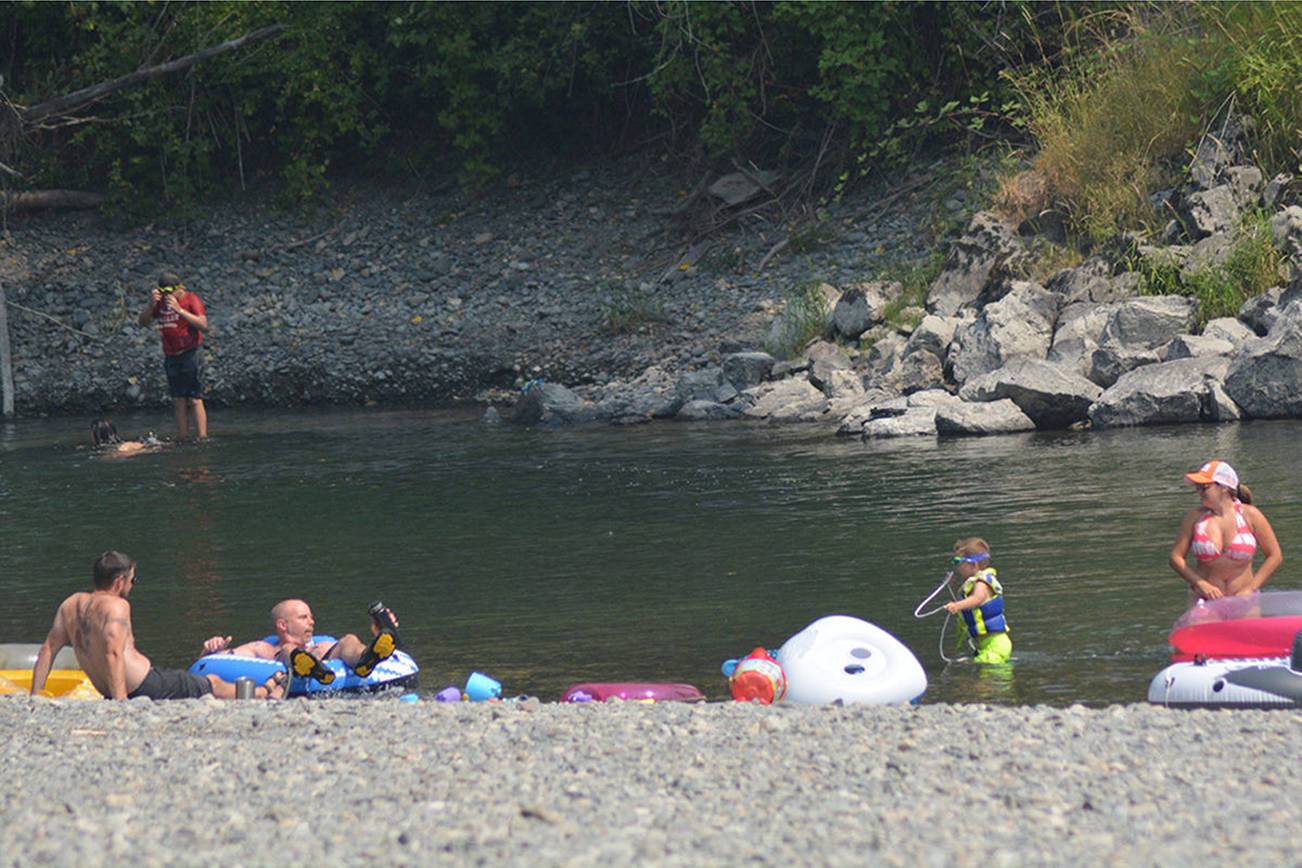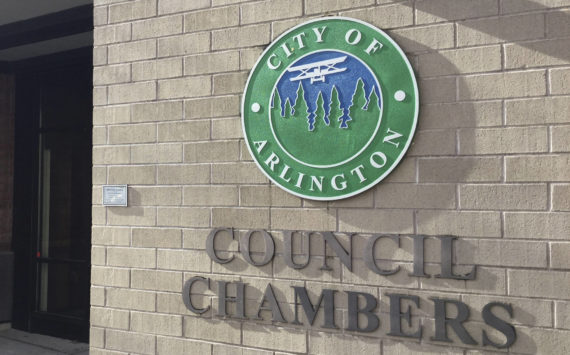ARLINGTON – Last summer on the day before school started, a 16-year-old girl swimming with family in the Stillaguamish River at the Lincoln Bridge went under, and didn’t resurface until her brother pulled her near-lifeless body to the inaccessible side of the shore.
Arlington fire personnel initiated lifesaving efforts after swimming to her location and floating her back on a plastic spine board, where she was rushed to a hospital and recovered after weeks in critical condition.
Had it not been for family pulling her from the water, firefighters would not have been able to enter the water and initiate a beneath-the-surface rescue because they lacked the required training and certification.
Arlington firefighters won’t have that weight around their neck any longer.
Five members this spring completed four days of certification training hosted by Pierce County Fire Rescue, the only agency approved to instruct the program. The Technician Level Rescue Swimmer certification is provided through the Professional Association of Diving Instructors.
“We’ve been frustrated for many years that we couldn’t get in the water,” Fire Chief Dave Kraski said. “The longer you wait, the longer it transitions from a rescue to a body recovery. That incident last year really pushed the need at that point that we’ve got to do something different here.”
Representing Arlington were team leader and Capt. Kirk Normand, and firefighters Andrew Shannon, Chris Peterson, Sam Johnston and Thomas Jackson.
In a separate class, Marysville Fire District announced Monday that eight of their firefighters will become certified as Rapid Entry Rescue Swimmers in September (see Page 15). That will benefit the Seven Lakes area and Twin Lakes Park in Lakewood, where a swimmer drowned last summer.
Arlington’s team underwent a rigorous evaluation and endurance testing that included a timed swim of 550 yards, treading water for 15 minutes, an 800-yard snorkel swim without using their arms, free diving into a pool to recover and swim with weights, and pulling a simulated exhausted or injured diver in full gear 100 yards without stopping.
It wasn’t Navy Seal training; it only felt like it, they said.
Some of the training was at Pacific Lutheran University near Tacoma the first two days, followed by more tests in nearby Steilacoom Bay or American Lake.
“In Steilacoom, the guys were just beat, and they looked like whipped dogs,” Kraski said. “They said the training was one of the hardest things they’ve ever done.”
In more practical terms, their tools of the trade will be masks, snorkels, fins and wet suits, and an ability to dive down no more than 40 feet. Air tanks and SCUBA training is a whole other area of expertise.
The Arlington team, while in great shape, took no chances and were able to pre-train at the Snohomish Aquatics Center for free, Kraski said.
Surrounding county fire districts along the Stilly from Silvana to Darrington have a Swift Water Rescue Team with hovercrafts and boats that can access the water. They can also enter the water, but they can’t go below the surface, Kraski said.
Fire District 21 – Arlington Heights responds to calls in the river area closest to downtown. Kraski said they paid for two-thirds of the $12,000 related to the training and equipment.
Additionally, the Sheriff’s Office has a dive recovery team, and in instances when the swift water team can’t reach a swimmer, many times a friend, family or good Samaritan has the person out of the water by the time rescuers arrive.
Kraski said the Arlington team is primarily focused on the 10 weeks of summer between June and Labor Day weekend, when the river runs low and shallow.
The crew about a week ago had someone lost after hours, after dark. There had been some partying going on in the group and somebody was missing, but they launched a hovercraft and were able to locate the person.
From a risk management standpoint, the river is not within city limits, so don’t look for signs warning visitors to “swim at your own risk” in a setting where it should be common sense.
The river, while calm on the surface, can be misleadingly dangerous below. The confluence near the Centennial Bridge in Haller Park where the north and south forks of the Stilly meet produces a strange, swirling eddy that actually pushes a submerged person upstream. The rescue team tested it themselves.
Other deceptive locations on the river include the boulders under and near the Highway 530 Lincoln Bridge that can drop off from 2 feet to 10 feet, causing swimmers to lose their footing, and the “big rock” at Blue Stilly Park, where the upstream side of the rock isn’t deep, but the downriver side is.
The rescue team – fingers crossed – has not been called to a drowning or near-drowning this summer.
“In a cold water drowning, there’s a key ten- to fifteen- minute window where we can really make a difference” once we’re on scene, Kraski said.








